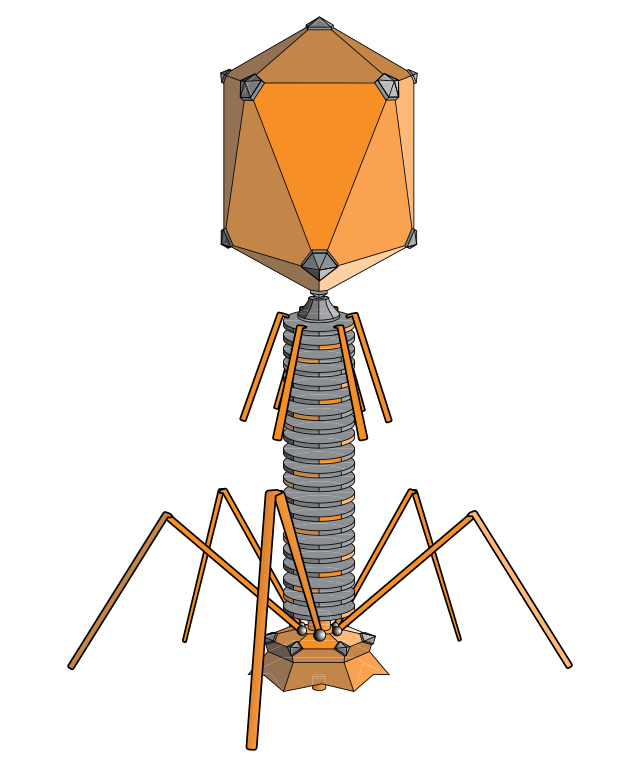Bacteria:

Bacteria constitute a large domain of prokaryotic microorganisms. Typically a few micrometres in length, bacteria have a number of shapes, ranging from spheres to rods and spirals. Bacteria were among the first life forms to appear on Earth, and are present in most of its habitats. Bacteria inhabit soil, water, acidic hot springs, radioactive waste,and the deep portions of Earth's crust. Bacteria also live in symbiotic and parasitic relationships with plants and animals. They are also known to have flourished in manned spacecraft.
Endospores:
Endospores show no detectable metabolism and can survive extreme physical and chemical stresses, such as high levels of UV light, gamma radiation, detergents, disinfectants, heat, freezing, pressure, anddesiccation. In this dormant state, these organisms may remain viable for millions of years, and endospores even allow bacteria to survive exposure to the vacuum and radiation in space. According to scientist Dr. Steinn Sigurdsson, "There are viable bacterial spores that have been found that are 40 million years old on Earth
Some bacteria also transfer genetic material between cells. This can occur in three main ways. First, bacteria can take up exogenous DNA from their environment, in a process called transformation. Genes can also be transferred by the process of transduction, when the integration of a bacteriophage introduces foreign DNA into the chromosome. The third method of gene transfer is conjugation, whereby DNA is transferred through direct cell contact.
Transduction of bacterial genes by bacteriophage appears to be a consequence of infrequent errors during intracellular assembly of virus particles, rather than a bacterial adaptation. Conjugation, in the much-studied E. coli system is determined by plasmid genes, and is an adaptation for transferring copies of the plasmid from one bacterial host to another. It is seldom that a conjugative plasmid integrates into the host bacterial chromosome, and subsequently transfers part of the host bacterial DNA to another bacterium. Plasmid-mediated transfer of host bacterial DNA also appears to be an accidental process rather than a bacterial adaptation.
Transformation, unlike transduction or conjugation, depends on numerous bacterial gene products that specifically interact to perform this complex process, and thus transformation is clearly a bacterial adaptation for DNA transfer. In order for a bacterium to bind, take up and recombine donor DNA into its own chromosome, it must first enter a special physiological state termed competence (see Natural competence). In Bacillus subtilis about 40 genes are required for the development of competence. The length of DNA transferred during B. subtilis transformation can be between a third of a chromosome up to the whole chromosome. Transformation appears to be common among bacterial species, and thus far at least 60 species are known to have the natural ability to become competent for transformation. The development of competence in nature is usually associated with stressful environmental conditions, and seems to be an adaptation for facilitating repair of DNA damage in recipient cells.
In ordinary circumstances, transduction, conjugation, and transformation involve transfer of DNA between individual bacteria of the same species, but occasionally transfer may occur between individuals of different bacterial species and this may have significant consequences, such as the transfer of antibiotic resistance. In such cases, gene acquisition from other bacteria or the environment is called horizontal gene transfer and may be common under natural conditions. Gene transfer is particularly important in antibiotic resistance as it allows the rapid transfer of resistance genes between different pathogens.
Bacteriophages:

Bacteriophages are viruses that infect bacteria. Many types of bacteriophage exist, some simply infect and lyse their host bacteria, while others insert into the bacterial chromosome. A bacteriophage can contain genes that contribute to its host'sphenotype: for example, in the evolution of Escherichia coli O157:H7 and Clostridium botulinum, the toxin genes in an integrated phage converted a harmless ancestral bacterium into a lethal pathogen. Bacteria resist phage infection through restriction modification systems that degrade foreign DNA, and a system that uses CRISPR sequences to retain fragments of the genomes of phage that the bacteria have come into contact with in the past, which allows them to block virus replication through a form of RNA interference. This CRISPR system provides bacteria with acquired immunityto infection.

Δεν υπάρχουν σχόλια:
Δημοσίευση σχολίου